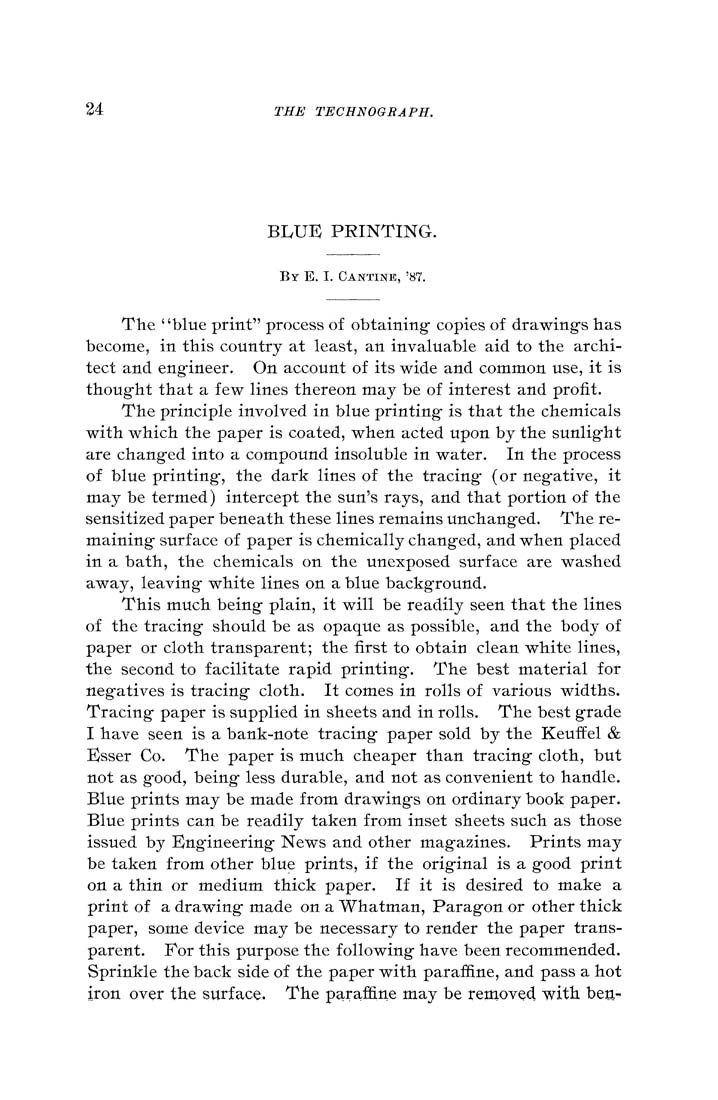24 THE TECHNOGRAPH,
BLUE PRINTING.
By E. I. Cantine, '87.
The "blue print" process of obtaining copies of drawings has
become, in this country at least, an invaluable aid to the archi¬
tect and engineer. On account of its wide and common use, it is
thought that a few lines thereon may be of interest and profit.
The principle involved in blue printing is that the chemicals
with which the paper is coated, when acted upon by the sunlight
are changed into a compound insoluble in water. In the process
of blue printing, the dark lines of the tracing (or negative, it
may be termed) intercept the sun's rays, and that portion of the
sensitized paper beneath these lines remains unchanged. The re¬
maining surface of paper is chemically changed, and when placed
in a bath, the chemicals on the unexposed surface are washed
away, leaving white lines on a blue background.
This much being plain, it will be readily seen that the lines
of the tracing should be as opaque as possible, and the body of
paper or cloth transparent; the first to obtain clean white lines,
the second to facilitate rapid printing. The best material for
negatives is tracing cloth. It comes in rolls of various widths.
Tracing paper is supplied in sheets and in rolls. The best grade
I have seen is a bank-note tracing paper sold by the Keuffel &
Esser Co. The paper is much cheaper than tracing cloth, but
not as good, being less durable, and not as convenient to handle.
Blue prints may be made from drawings on ordinary book paper.
Blue prints can be readily taken from inset sheets such as those
issued by Engineering News and other magazines. Prints may
be taken from other blue prints, if the original is a good print
on a thin or medium thick paper. If it is desired to make a
print of a drawing made on a Whatman, Paragon or other thick
paper, some device may be necessary to render the paper trans¬
parent. For this purpose the following have been recommended.
Sprinkle the back side of the paper with paraf&ne, and pass a hot
iron over the surface. The parafiine may be removed with beti-
|








